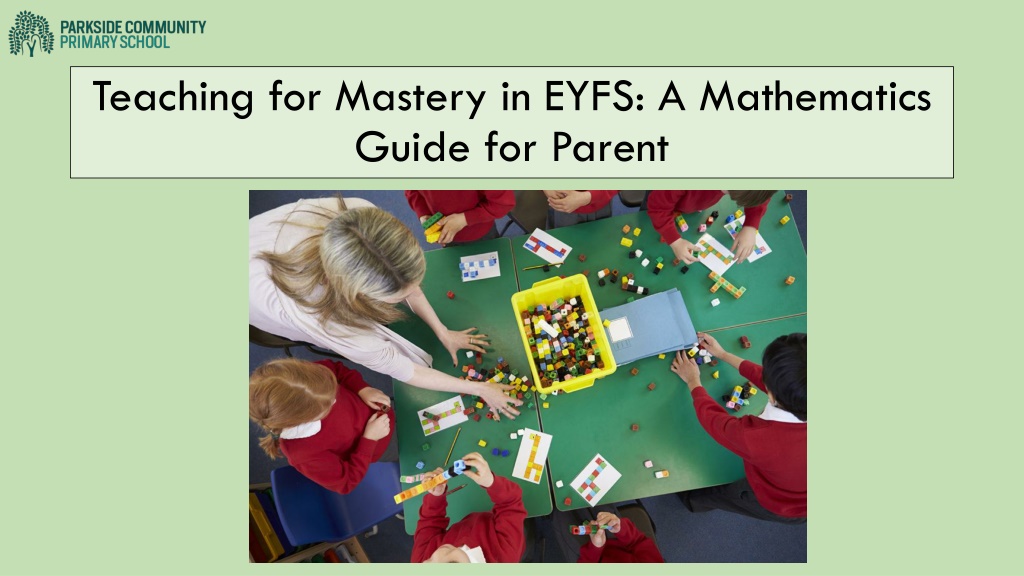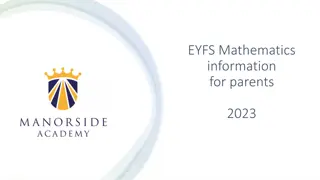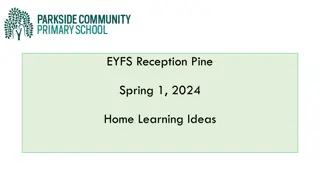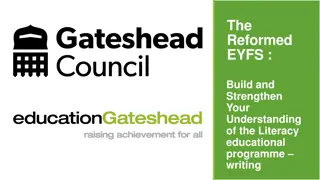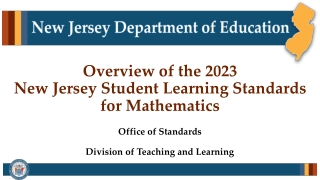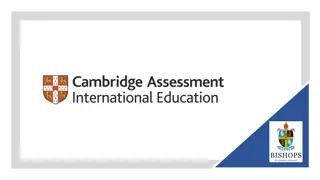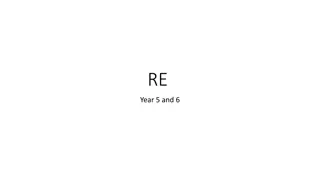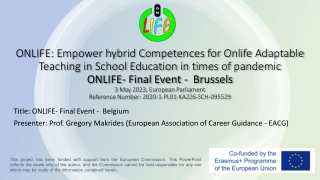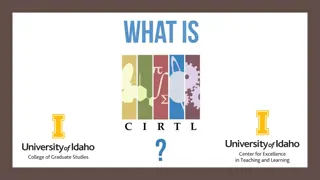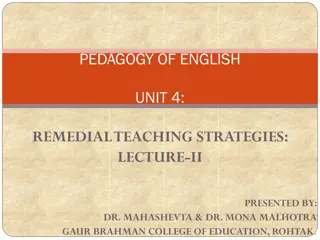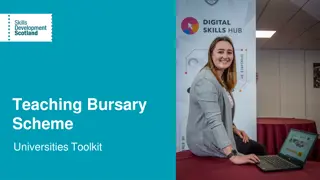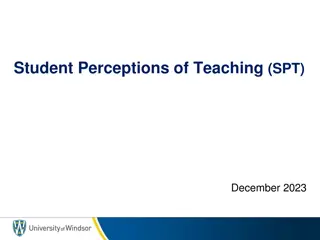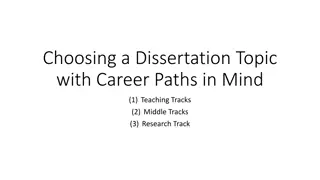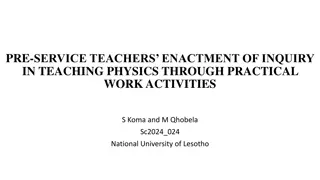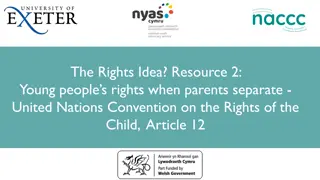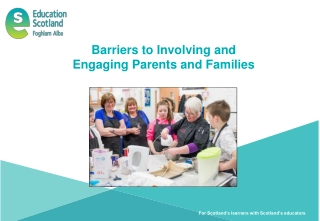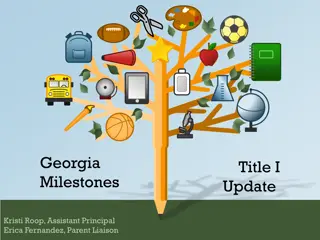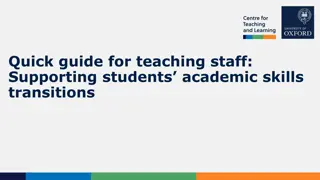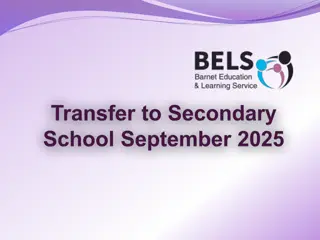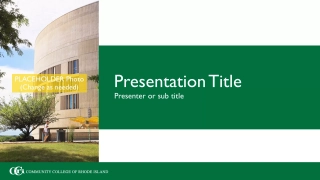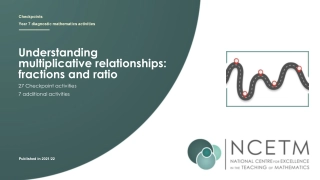Teaching for Mastery in EYFS: A Mathematics Guide for Parents
Teaching for Mastery in Early Years Foundation Stage (EYFS) involves helping children develop a deep understanding of numbers through various activities like fluency, representing numbers, counting, and recognizing amounts without needing to count. This guide focuses on early learning goals related to numerical patterns, encouraging children to build a solid foundation in mathematics that will support their long-term math skills.
Download Presentation
Please find below an Image/Link to download the presentation.
The content on the website is provided AS IS for your information and personal use only. It may not be sold, licensed, or shared on other websites without obtaining consent from the author. Download presentation by click this link. If you encounter any issues during the download, it is possible that the publisher has removed the file from their server.
Presentation Transcript
Teaching for Mastery in EYFS: A Mathematics Guide for Parent
What is Teaching for Mastery? We see Teaching for Mastery in maths as allowing the pupils to gain a deep understanding of maths, allowing them to acquire a secure and long-term understanding of maths that allows them to make continual progress to move onto more complex topics.
Early Learning Goals Number Numerical Patterns Have a deep understanding of number to 10, including the composition of each number; Verbally count beyond 20, recognising the pattern of the counting system; Subitise (recognise quantities without counting) up to 5; Compare quantities up to 10 in different contexts, recognising when one quantity is greater than, less than or the same as the other quantity; Automatically recall (without reference to rhymes, counting or other aids) number bonds up to 5 (including subtraction facts) and some number bonds to 10, including double facts. Explore and represent patterns within numbers up to 10, including evens and odds, double facts and how quantities can be distributed equally.
How do we teach for Mastery in Early Years? Fluency In Reception, we aim to teach so that children have a deep understanding of number. Representing Numbers We want to develop children s number sense so that they understand the number rather than just recognising the numeral. Children need to understand that numbers can be represented in many ways, not just as a written numeral. We use many different objects and pictures to show that numbers can be represented in lots of ways. Counting Children sometimes need lots of practise to recognise numbers in different forms. When counting, children need to understand That we need to say one number for each object counted (touch counting). The final number we say is how many altogether. Some children continue to count after they have reached the final object as they don t connect the numbers they are saying to the objects in front of them. That we can count objects in any order and the total stays the same
Recognising amounts Another skill that is very important is recognising small amounts without the need to count them. Initially this should be by using concrete objects such as those shown above but as children progress, allowing them to see groups of dots in different arrangements helps them to mentally see how many objects are there without needing to count. This is a very important skill when children begin to add and subtract. Using dice is a good way to practise this skill before moving onto objects in different arrangements. Understanding that the total stays the same even when the objects move When children first start to use numbers, they often do not understand that if we move objects into another arrangement the total stays the same. We practise this with many different types of objects but a useful tool is using a tens frame to be able to move counters around.
Reasoning Reasoning in maths helps children to be able to explain their thinking, therefore making it easier for them to understand what is happening in the maths they are doing. It helps them to think about how to solve a problem, explain how they solved it and to think about what they could do differently. Problem Solving Problem solving in maths allows children to use their maths skills in lots of contexts and in situations that are new to them. It allows them to seek solutions, spot patterns and think about the best way to do things rather than blindly following maths procedures. In Reception, problem solving might include: spotting, following and creating patterns estimating amounts of objects predicting how many times they can do something in a minute sharing objects between different groups particularly when the amount of groups change and the amount of objects stays the same finding different ways to partition numbers eg 5 could be 5+0, 4+1, 3+2 etc
How can I help at home? Count - steps up the stairs, money into a money box etc Ask children to say how many without counting (5 or fewer) Play games using dice/dominoes and encourage child to say how many spots without counting. Ask children to set the table with enough knives, forks and plates for everyone. Spot numbers in the environment on phones, microwaves, clocks, registration plates, doors. Ask children to think of their own representations for numbers eg one of them, two hands, three bears, four wheels on a car, five toes, six sides on a dice, seven dwarves, eight legs on an octopus etc Deliberately make mistakes. Children need to understand mistakes are normal and everyone makes them eg get mixed up when counting, muddle two numbers when ordering them. Watch Numberblocks on Cbeebies. This programme is written by maths specialists to model maths concepts and represents number brilliantly. Also, Numberjacks is excellent for solving problems. Hide numbers around the house or garden for children to find. Play outdoor maths games like hopscotch and skittles. Even better, let children make up their own games and decide how to score points. Read books with maths concepts eg The Very Hungry Caterpillar, One is a snail, ten is a crab, What s the time, Mr Wolf? The doorbell rang. Draw attention to more and less. Try some activities from the NRICH website for EYFS to encourage depth - www.nrich.maths.org (please be mindful that we will be using some of these in school) Ask questions such as How many more? , How many altogether? , How many would I have if
Websites https://www.bbc.co.uk/iplayer/episodes/b08bzfnh/numberblocks https://www.topmarks.co.uk/ https://www.bbc.co.uk/programmes/b006mhcr/episodes/guide https://www.bbc.co.uk/bitesize/subjects/zhtf3j6 https://www.bbc.co.uk/cbeebies/grownups/help-your-child-with-maths https://uk.splashlearn.com/ https://ictgames.com/
